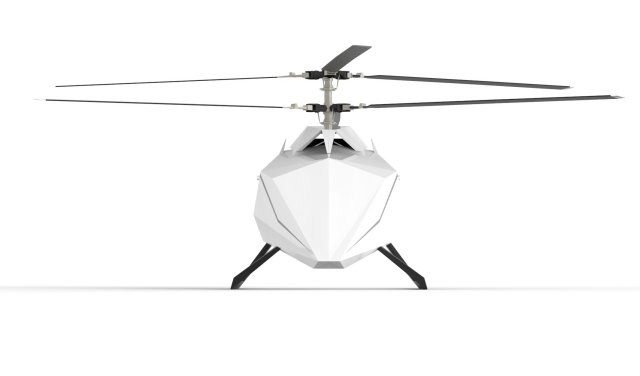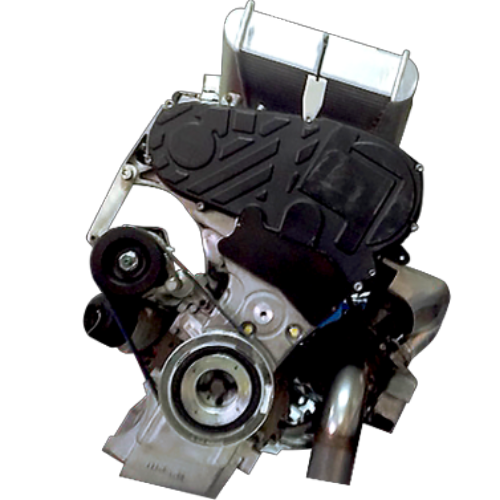
Turbines have an excellent power to weight ratio and as such are the reason is why they are used for helicopters where weight is a critical factor. Nevertheless, their fuel efficiency compared to diesel piston engines is extremely poor, especially for smaller platforms. The diesel piston engine consumes +/- 60% less fuel compared to a turbine with similar specifications and produces up to 40% less CO2 than standard turbine helicopters.
Over the past few years, the diesel engine has received lots of new technology through innovations and new materials, increasingly from Formula 1 racing car technology. Diesel engines are highly reliable, robust, and much safer with clear cut advantages over gasoline engines/heat-conversion engines due to higher efficiencies, higher performance figures, flight and fire safety attributed to the much lower volatility of Aero-Diesel over Avgas. They are perfect for Maritime operations reducing the extremely hazardous situations with landing and take-off from ships.
Coaxial RPAS also have the advantage that they can lift a far greater payload with the same power as conventional helicopters and with no Heck Rotor, shorter tail boom, Coaxial VTOL’s are highly stable even in high wind conditions. ARATOS-SWISS Homeland Security AG/Ltd. have designed together with our partners over the past few years, a truly unique Vertical Take-Off and Landing (VTOL) – Remotely Piloted Aircraft Systems (RPAS) – Optionally Piloted Helicopter (OPH).

The engine is a common-rail, 4-stroke, 2.2L 5-cylinder block, turboshaft with an intercooling system specially produced for aircraft applications necessary in high-temperature environmental conditions. It has phenomenal engine power statistics of 246Kw (330HP), increasing a further 48Kw (65HP) by adding the Hybrid configuration. Average fuel consumption is approximately 32L/H (Kerosene, JP-1, JP-4) with an engine – Time Between Overhaul (TBO) of 2000 hours including lower fuel consumption, greatly decreases the operational costs down to an absolute minimum.
The weight of the frame with fuel for 10 hours is around 1,188Kg net/net, plus a Payload of 500Kg equates to the Most Take-Off Weight (MTOW) of 1,700Kg. The redundant autopilot is STANAG 4865 compliant providing Lost-Link handling including “return home” and automatic landing. Mode-S transponder, Data-Link (data/video/voice) up to 120Km Line of Sight (LOS), on Land with mobile ASWI-SWITCH antennas up to 600Km or alternative SATCOM.
The Optional Piloted Helicopter (OPH) actuators have electromagnetic clutches. The actuator output shaft can easily be moved if the electromagnetic clutch is disengaged, allowing the pilot to take control of the helicopter. Also, in the event of an actuator failure, the clutch can be disengaged.
The range of the applications and missions through the increased payload capacity is almost unlimited expanding the options for ISR, SAR, Anti-Jamming or combination of sensors. Again, ideal for Maritime operations, requiring increased payload specifications.
The Optional Piloted Helicopter (OPH) vastly increases the opportunity to use the RPAS platform in an environment where drones are highly restricted due to strictly enforced aviation regulations, for example, search and rescue, disaster and forest fires monitoring. As a manned platform, the pilot is the “anti-collision system” enabling the OPH to fly within civilian airspace, until the approval of automated anti-collision systems in the market allowing RPAS to fly alongside civilian aircraft equipped with an array of sensors and the data-link options worldwide. Also, when the OPH pilot is in control, there is no requirement for an additional RPAS pilot/specialists on the ground. The OPH version is ideal for supporting Law Enforcement/Police in situations when they require support, e.g., Kidnapping, crime scenes, missing people, etc.
ARATOS-SWISS wish to start the production of the first prototype as soon as possible with a goal to have completed the first prototype by the summer of 2018. The VTOL RPAS market is firmly believed to have a value worth around 5.5B USD by 2020.
Source: Press Release
